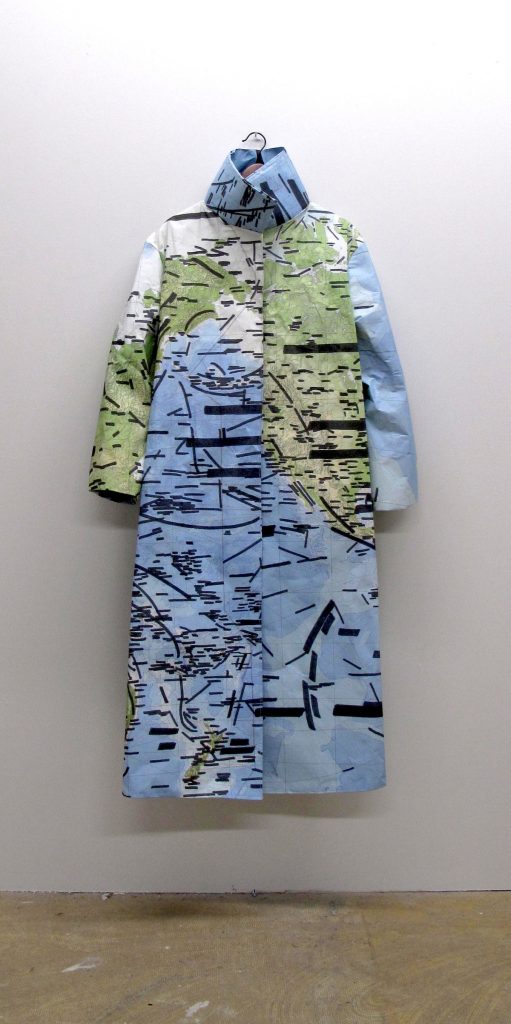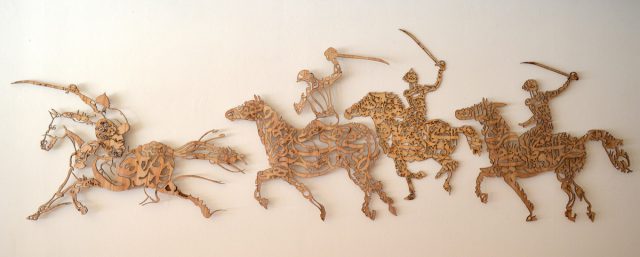VOICES OF NEW YORK—The Indian-born artist Jaishri Abichandani, founder of the South Asian Women’s Creative Collective, felt an urgent need: to make sure the diasporic artists of South Asia, many of whom work in New York as well as other locales, receive the recognition and the visibility that they deserve. Only 0.2 percent of represented artists in New York City are South Asian artists, noted Abichandani. If some of them are stars, she says, this has happened “in spite of the circumstances, not because there are support structures.” When shows of South Asian artists happen, the artists of the diaspora are often excluded, while they are not considered “American enough” for shows of American artists, she added. As a community of artists, she said, “we fall into a space of invisibility.”
Lucid Dreams and Distant Visions: South Asian Art in the Diaspora, on view at Asia Society through August 6, aims to change all that, and start a conversation about the need for ongoing representation of this community’s work. Abichandani, who has curated shows for many years, including the Fatal Love exhibit for the Queens Museum in 2005, about a year and a half ago took her idea for a group exhibit to Asia Society, where she met a receptive audience in Boon Hui Tan, newly named Asia Society vice president for global arts and cultural programs and director of the Asia Society Museum.
Abichandi envisioned an exhibition that would include works produced over the past two decades by more than 30 artists. Over time, the curators winnowed the list to 19 artists.
For Tan, Lucid Dreams is “not an exhibition only; it is a project about building community.” At a moment in time when lines are drawn that divide people, the works in the show, he said, give the public an opportunity “to find ways to empathize with other lives and to try to see the world from other kinds of experiences.” Diaspora artists “live in two or three worlds,” he said, and thereby remind us that life is ambiguous.

The artist Jaret Vadera, who was born in Toronto and lives and works in New York, Toronto, and India, spoke about his 2016 work, Emperor of No Country, a fabric coat printed with a world map on which all the place names had been blacked out. In other works in his Pangaea series, he said, the coordinates as well as location names on maps are deleted, to show how little is lasting or real about the access and power relations that mapmakers have attempted to represent in delineating particular territories and lands.
Near Vadera’s work is the striking installation The Present is a Ruin Without the People, by Pakistani-born Ruby Chishti, who lives and works in Brooklyn. Spanning 10 feet across, the work is created from layers of recycled textile attached to a mesh frame, with small scattered window frames to evoke spaces emptied of people.
Chishti said she started to explore how to represent absence after experiencing the loss of many family members. After experimenting initially with body casts and her own clothing, she eventually realized that in architecture “people live and leave,” and that “in bodies memories live.” The work grew organically; she used clothing from thrift stores as well as clothing disposed of in her building, and eventually added children’s clothing and remnants of bridal clothing in addition to metal pieces. She even included pieces of clothing belonging to her mother, for whom she acted as caretaker for 11 years. Haunting sounds emanate from the piece as the viewer approaches, enhancing the sense of spaces emptied of living souls.

Shahzia Sikander, a recipient of the MacArthur Foundation’s “Genius” award whose works are in numerous museum collections around world, takes as her starting point the Indo-Persian miniaturist tradition. The artist, who was born in Lahore, Pakistan, has four works in the show. One of these, Many Faces of Islam, 1993-99, was commissioned for the New York Times special issue Imaging the Millennium in 1999, yet appears to be a prescient rendition of how America’s relationship with the Muslim world would evolve post-9/11. “How the foe has become a friend, how a friend has become a foe, that whole interface,” Sikander said, plays out in the storytelling of the miniaturist-like presentation.
Also drawing on traditional art forms, in this case classical calligraphy, is the 2017 work History is a nightmare from which I am trying to awake II, by Khalil Chishtee. The Pakistani artist fashions a verse by Muhammad Iqbal, the Urdu poet and leader of the Pakistan Movement [the 1940s independence movement to break away from the British Empire], into a wall relief of invaders on horseback. The common thread running through his art practice, Chishtee said, is the need to “look at ourselves, as individuals, as a nation, as a group, as a society.”
“The stories of our experiences are still not told enough, the images of our experiences are not understood well enough, the complex ideas of our communities not well told enough,” said former president of the Asia Society Vishakha Desai. The works in the exhibition, she said, tell stories about longing, belonging, and reflection. Desai is now chair of the board of the Smithsonian Asian Pacific American Center, which supported the Lucid Dreams exhibit at the Asia Society.
South Asian artists of the diaspora, said Abichandani, don’t have an El Museo del Barrio or a Studio Museum in Harlem to represent them and display their work. Might the Asia Society be a permanent venue for a rotating exhibit of art of the South Asian diaspora? It would be ideal, she said, for this exhibit not just to be “an intervention, but the beginning of structural change.”
This article first appeared in Voices of New York, a publication of the CUNY Graduate School of Journalism’s Center for Community and Ethnic Media.